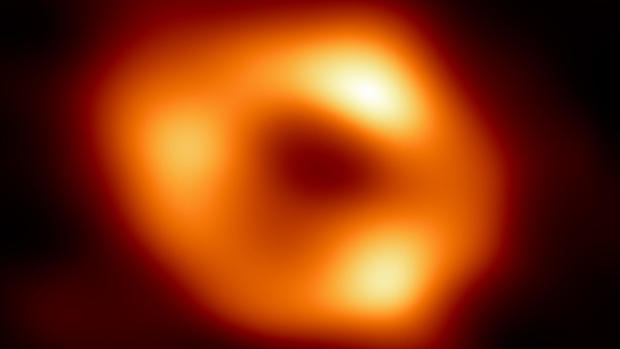Supermassive black hole at center of Milky Way revealed, with help from local researchers
For the first time, astronomers have captured an image of the supermassive black hole at the center of our galaxy. It's the first direct observation confirming the presence of the black hole, known as Sagittarius A*, as the beating heart of the Milky Way.
Black holes don't emit light, but the image shows the shadow of the black hole surrounded by a bright ring of light, which is bent by the gravity of the black hole. Astronomers say the black hole is 4 million times more massive than our sun.
It has taken years for astronomers to capture and confirm this image and discovery. Previously, scientists observed stars orbiting some invisible, massive object at the galactic center.
The discovery was made possible by more than 300 researchers from 80 institutions, including some from Massachusetts, working with a network of eight different radio telescopes around the globe that comprise the Event Horizon Telescope. The telescope is named after the "event horizon," the point at which no light can escape from a black hole.
Scientists at UMass-Amherst, MIT and Harvard University contributed to the discovery.
"The exciting thing about this result is that it's in our own back yard, in our own galaxy" UMass astronomy research professor Gopal Narayanan said in a statement.
MIT notes that the new picture looks similar to the first-ever image of a black hole obtained in 2019. Experts there say it confirms a prediction of general relativity, that all black holes are alike.
"We now have a consistent image that looks like general relativity is working on both ends of supermassive black holes," said research scientist Kazunori Akiyama at MIT's Haystack Observatory.
Harvard researchers say the public can expect "even more impressive images as well as movies of black holes in the near future."
"Never before have we had so much data on a black hole, and it comes at a crucial moment when our models of how gas behaves in its vicinity are in dire need of revision," astrophysicist Angelo Ricarte of Harvard's Center for Astrophysics said. "The EHT is ushering in a new era of precision black hole astrophysics."




